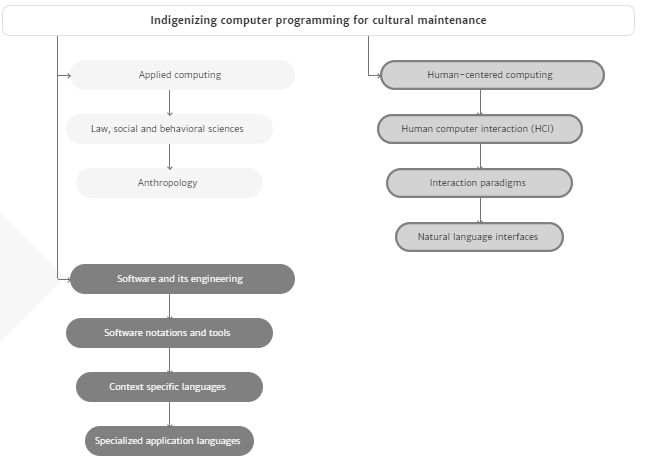While looking for programming environment developed with indigenous views or languages, I found the research paper ” Indigenizing computer programming for cultural maintenance” that I believe will innovate computer programming and Indigenous digital design. For his doctoral research, Corbett (2018) is working on the development of a toolkit that will unite Indigenous cultural components with natural programing language, an Indigenous Digital Media Toolkit (“IDMT”) he calls it. Corbett (2018) explains that IDMT is “a programming language with a specialized user interface that uses the Cree language and syllabic writing system to programmatically create digital artworks and provides a digital foundation for the maintenance and/or revitalization of Indigenous culture” (Corbett, 2018, p.243). He adds that IDMT also contributes to the reconciliation process (Corbett, 2018).
An important point that he mentioned about his development is that he considers the design of technology at a deeper level. I want to explain why this point is essential in computer science education for Indigenous students. Most of the modification done in culturally responsive programming tools (part of my investigation for my final project), whether visual platforms (e.g., CDSTs, Alice, Scratch) or the translated environments that are used in educational/ work contexts encounter surface changes such as modifying the language, the context the tool is presented in, or the design of the computing activities themselves. However, none of these developments have entirely escaped from the legacy of the industry and the Western-coded engines/system. In turn, Indigenous students’ self-determination in design and development and possibilities of self-expression are still very limited by the pre-existing system. IDMT is the first programming language that goes to the next level as it addresses the “underlying culture as an inherent component of the coding language itself” (p. 244).

IDMT Model (Corbett, 2018)
Reference:
- Corbett, J. M. R. (2018). Indigenizing computer programming for cultural maintenance. Paper presented at the 243-244. https://doi.org/10.1145/3191697.3213802